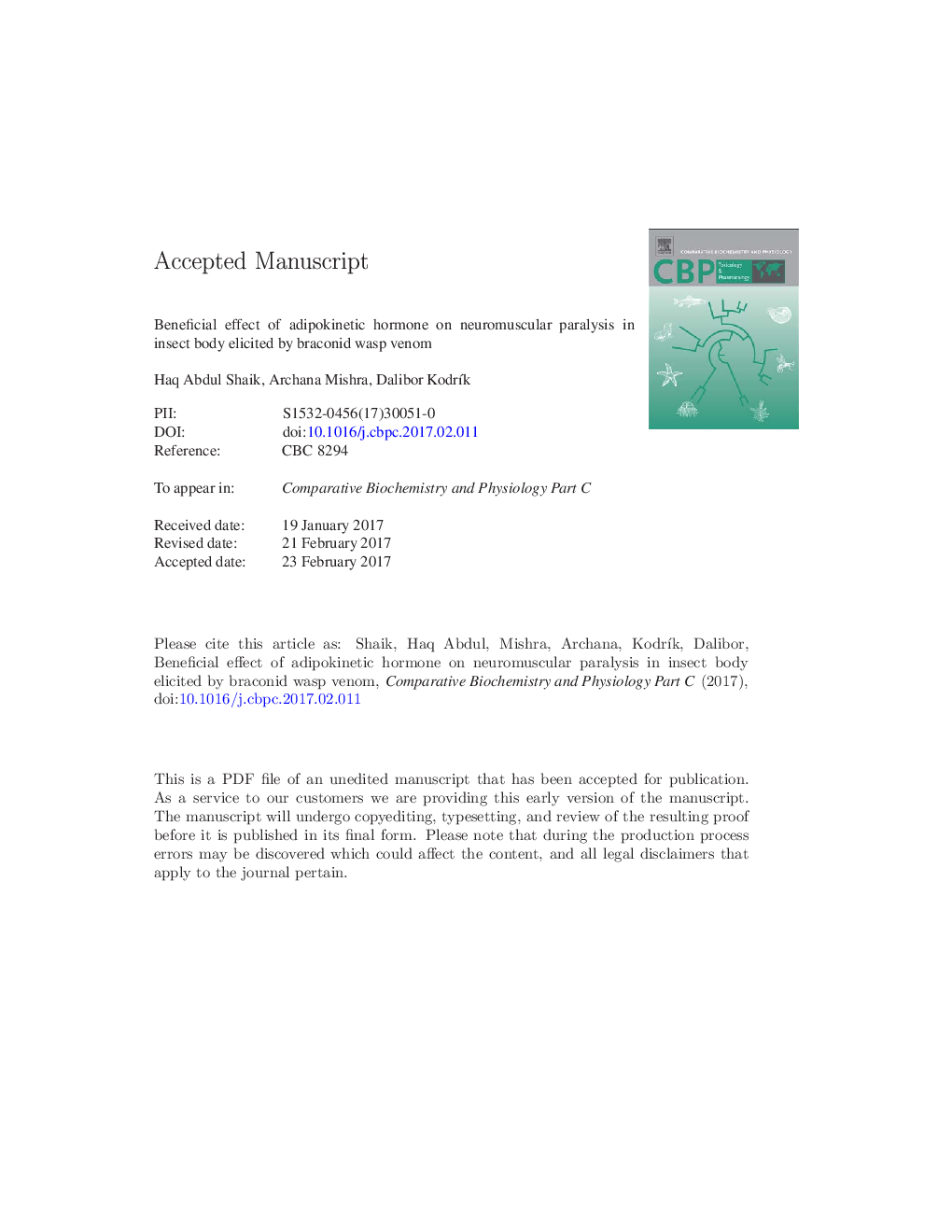| Article ID | Journal | Published Year | Pages | File Type |
|---|---|---|---|---|
| 5510612 | Comparative Biochemistry and Physiology Part C: Toxicology & Pharmacology | 2017 | 29 Pages |
Abstract
The effect of Habrobracon hebetor venom and the role of the adipokinetic hormone (AKH) in poisoned adult females of the firebug Pyrrhocoris apterus were studied 24 and 48Â h after treatments. Venom application elicited total neuromuscular paralysis in firebugs, but the co-application of venom and Pyrap-AKH significantly reduced paralysis (up to 3.2 times) compared to the application of venom only. Although the mechanisms of their action are unknown, both agents might affect neuromuscular junctions. Venom application significantly increased the expression of both P. apterus Akh genes (Pyrap-Akh 5.4 times and Peram-Cah-II 3.6 times), as well as the level of AKHs in the central nervous system (2.5 times) and haemolymph (3.0 times). In the haemolymph, increased AKH levels might have led to the mobilization of stored lipids, which increased 1.9 times, while the level of free carbohydrates remained unchanged. Total metabolism, monitored by carbon dioxide production, significantly declined in paralysed P. apterus individuals (1.4 times and 1.9 times, 24 and 48Â h after the treatment, respectively), probably because of a malfunction of the muscular system. The results suggest an active role of AKH in the defence mechanism against the stress elicited by neuromuscular paralysis, and the possible involvement of this hormone in neuronal/neuromuscular signalling.
Keywords
Related Topics
Life Sciences
Biochemistry, Genetics and Molecular Biology
Biochemistry
Authors
Haq Abdul Shaik, Archana Mishra, Dalibor KodrÃk,
